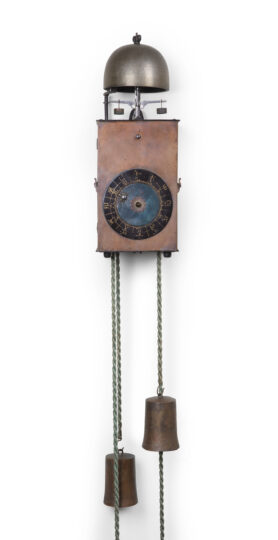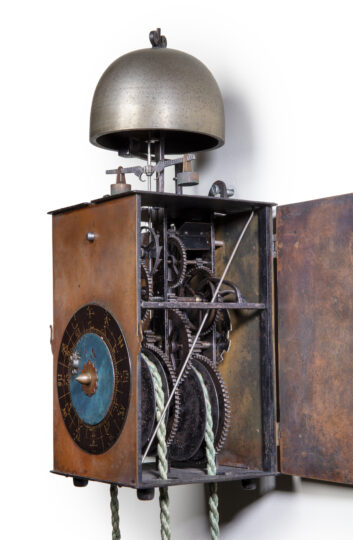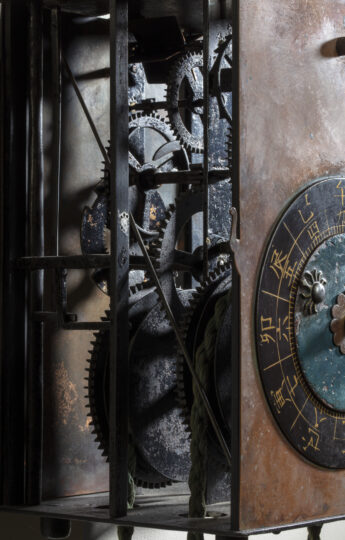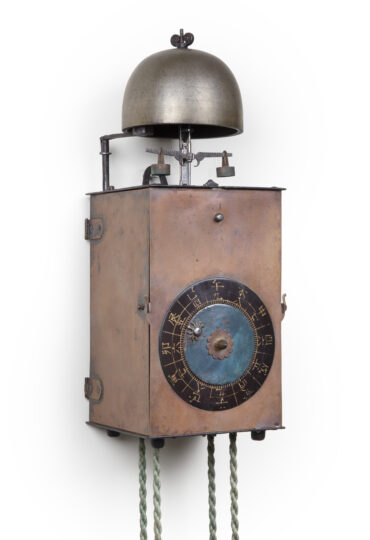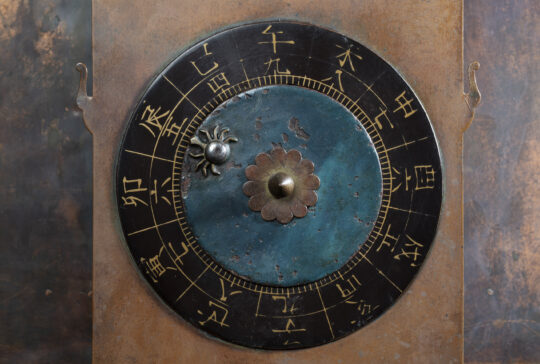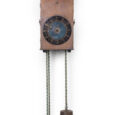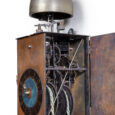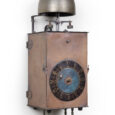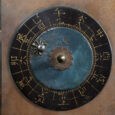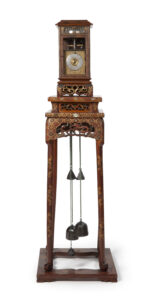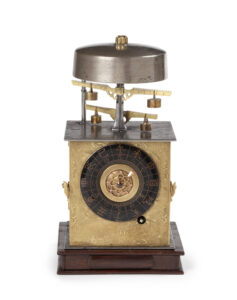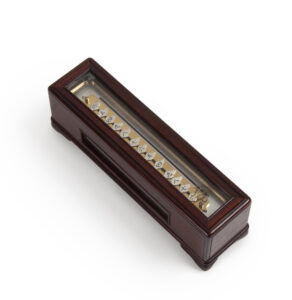JAPANESE STRIKING LANTERN CLOCK ‘Hashira dokei’ Ca. 1790
M&R132
JAPANESE LANTERN CLOCK
‘Hashira dokei’
Circa 1790
Japan
Movement
The day-going weight-driven, mainly steel movement is constructed between bars and consists of going and striking trains. The going train has a vertical verge escapement with foliot, to vary the lengths of the hours during the day and the night. The movement is regulated by moving the small weights on the foliot. The striking is controlled by a countwheel and indicates the hours and half hours on a bell .
Dial
The copper dial plate has a steel chapter ring with polychrome Japanese hour numerals. There is a disc in the middle, which the single hour hand in spidermodel attached to it. The whole revolves in 24 hour and indicates the time on the brass chapter ring, which is divided in twelve parts, accompanied by the signs of the Japanese zodiac. The inner ring is divided into 2 x 6 toki from 4 – 9, represented by engraved Japanese numerals. Each toki has nine subdivisions, shown on the inside of the chapter ring.
Case
The patinated copper case has steel top and bottom plates, between which the steel movement is constructed. There are two doors to the sides, which are, just like the copper case. The case is surmounted by a large bell, secured by a large nut in the shape of a finial.
Duration 1 day
Height 41 cm.
Width 15.5 cm.
Depth 15 cm.
Literature
– W. Brandes, Alte Japanische Uhren.
– N.H.N. Mody, Japanese clocks.
Japanese time measurement
During the Edo period (1603-1868) only the Dutch were allowed to trade with Japan. They were the ones who introduced clocks into Japan. Japanese clockmakers adapted the designs and mechanisms to their own time measurement system. In this way the designed a double escapement – the part of the clock that makes the clock tick – to indicate the time during the day and the night. The design also took Japanese characters and Chinese signs of the zodiac.
Japanese time measurement is very different from its counterpart in the Western world. Instead of a fixed value for an hour the length of an hour in Japan, called toki is variable depending on the length of the day and night. Day and night are both divided into six toki, which cover the periods from sunrise to sunset and from sunset to sunrise. In summer the days are longer than the nights and consequently a day toki last longer than a night toki. In winter it is the other way around. This is the reason why Japanese clocks have sliding chapters to adjust the length of a toki. There are also clocks with a fixed chapter ring and a revolving hand. To regulate the lengths of the toki the weights on the foliot can be moved, which makes the clock go faster or slower. This is mainly found in older clocks. The hour numerals run from nine to four, the latter being midday. Japanese clocks indicate how many hours there are to come (5 is followed by 4), whilst European clocks indicate how many hours have passed (5 is followed by 6). In Japan the figure 9 was holy. Each toki, twelve in total, also had its own sign of the zodiac, which were sometimes indicated on a ring around the chapter ring.

